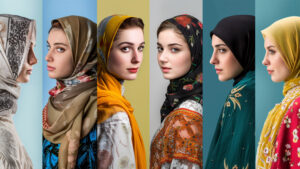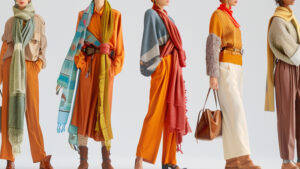
I’ve always wondered why someone might wear clothing tied to another faith. It can be a personal journey or a question of shared modesty1.
Christian women can wear hijabs if they choose, but understanding religious meaning, community views, and personal intent matters. Respect and context guide these decisions.
It’s worth unpacking the layers behind this choice.
What are the concerns regarding religious appropriation when Christian women wear hijabs?
Some worry it might trivialize a sacred symbol.
Wearing a hijab without regard for its Islamic roots can be seen as cultural or religious appropriation, making sensitivity and awareness crucial.

I recall a friend who donned a hijab for a themed photography shoot, simply because she admired its elegance. Another friend, who is Muslim, felt uneasy. She explained that hijabs represent more than a pretty head covering; they symbolize faith, modesty, and a deeper way of life. When outsiders wear them casually, it might feel like a costume rather than a respectful acknowledgment2 of religious practice.
Bridging Respect and Curiosity
- Learn First: Before wearing a hijab, it’s wise to learn about its spiritual and cultural significance3.
- Discuss Motives: Ask yourself: Am I doing this for fashion, solidarity, or deeper meaning?
- Gauge Reactions: Appropriation often arises from ignoring the lived experiences of those who own the symbol.
In many cases, wearing a hijab without understanding can trigger emotional responses4. Some Muslims may welcome the gesture if it’s an attempt at solidarity—like showing support against Islamophobia. But using it as a quick trend or photo prop might come across as disrespectful. It’s a fine line: empathy on one side, and carelessness on the other. As a Christian considering the hijab, taking time to listen and learn can help you sidestep misunderstandings and approach it with the heart of a curious ally rather than a tourist in someone else’s tradition.
How do personal and fashion choices intersect with religious symbols in this context?
Faith-inspired garments can become style statements.
Combining hijab with everyday fashion can blur lines between devotion and personal taste, requiring thoughtful reflection on where faith ends and style begins.

Some Christian women say they love how a hijab frames their face, pairing it with modern outfits to create a unique look. On social media, you might see trendy influencers wearing loosely draped scarves, labeling them “modest chic.” While it’s possible to enjoy the aesthetic, it’s also important to remember that hijabs hold deeper meaning for Muslims, including a covenant of modesty with God.
Fashion Meets Faith
- Modesty Across Religions: Christianity also emphasizes modest dress in certain communities. A hijab might resonate with personal values of humility or spiritual reflection.
- Blending Styles: Some Christian women mix a hijab-like scarf with a cross necklace, bringing together symbols from two different faith expressions.
- Community Reactions: Friends might praise the creative look, or they might question whether you fully understand its symbolic importance.
I’ve seen Christian friends who feel a hijab complements their sense of modesty. Others love the artistry of head wraps but worry about crossing cultural lines. Ultimately, the decision often hinges on motivation and respect. Clothing can be a canvas for personal beliefs and artistic expression—but when religious symbols are in play, the stakes get higher. The key is mindfulness about why and how you blend them.
What reactions might Christian women receive from the Muslim community when wearing hijabs?
Responses can range from applause to concern, reflecting individual perspectives.
Some Muslims see it as supportive or curious interest, while others view it as insensitive if the hijab’s core meaning isn’t honored.

I recall hearing two stories from friends in the same week—both Christian women wore hijabs in public. One received kind nods and started meaningful conversations with Muslim women who appreciated her attempt to understand their faith perspective. The other was quietly pulled aside by a concerned stranger who asked, “Are you mocking us or do you genuinely care?” This stark difference in reactions highlights how personal these encounters can be.
Factors Shaping Responses
- Intent: Is it solidarity, curiosity, or fashion? People often sense what’s driving your choice.
- Knowledge Level: If you can explain the spiritual or cultural significance3 you’ve learned, that can earn respect.
- Context: Wearing a hijab at a mosque as a sign of respect might be seen differently than wearing it casually for a night out.
Below is a simple overview:
| Reaction | Possible Reason |
|---|---|
| Positive | Perceived as respectful or open-minded |
| Neutral | Indifference, or uncertain about your motives |
| Negative | Seen as appropriation or misunderstanding |
Everything depends on the individual who observes you and the setting in which you wear it. When boundaries are clear and your purpose is respectful, many in the Muslim community might actually appreciate the gesture, though they could still raise questions. If they sense superficial reasons or feel you’re oversimplifying a deep tradition, they may respond with skepticism or disapproval.
What ethical considerations should be taken into account for Christian women adopting hijabs?
Thoughtfulness can make all the difference.
Understanding historical oppression, current discrimination, and the hijab’s spiritual weight can guide Christian women to make informed, ethical choices when wearing it.

Sometimes, people see a hijab on a non-Muslim and ask, “Why?” That question alone can spark deeper insight if you’re prepared. In many regions, Muslim women face harassment or stereotypes for wearing a hijab. A Christian woman might move more freely in the same garment, which highlights an imbalance: one group is penalized for a choice that another can adopt without consequence. Recognizing this can help you approach hijab-wearing with sensitivity.
Balancing Ethics and Empathy
- Educate Yourself: Learn about the religious, cultural, and political nuances surrounding hijabs.
- Acknowledge Privilege: Understand that you may not face the same scrutiny as Muslim women.
- Engage in Dialogue: If possible, talk to Muslim women and listen to their experiences. You’ll gain context that online research alone might miss.
- Reflect on Purpose: Am I using it as a costume piece or to show solidarity with the modesty ideals it represents?
- Respectful Exit: If you sense discomfort from the community you’re trying to honor, be willing to adapt or cease wearing it.
At its core, wearing a hijab has real weight—spiritually, culturally, and socially. For a Christian woman, it may represent a stance on modesty, or a gesture of solidarity5, or a fashion interest. The ethical line is drawn where sincerity meets respect. Ensuring you understand the bigger picture can help avoid missteps and create a chance for meaningful connection and learning.
Conclusion
Wear it thoughtfully, respecting faith, culture, and the nuanced meanings behind a simple piece of cloth.
-
Discover how modesty is perceived across different cultures and religions. ↩
-
Understanding respectful acknowledgment is key to cultural sensitivity. ↩
-
Learn about the deep cultural meanings associated with hijabs. ↩ ↩
-
Learn about the varied emotional reactions to hijab-wearing. ↩
-
Explore how wearing a hijab can be a gesture of support and solidarity. ↩




